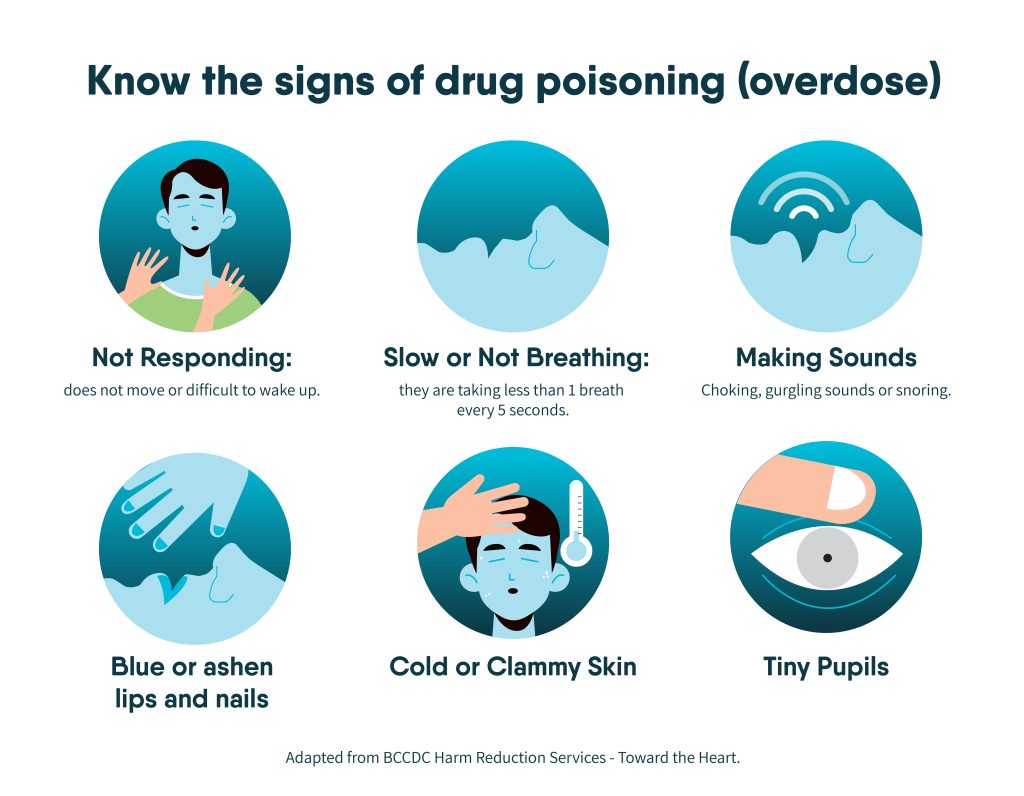HOW TO RECOGNIZE AND RESPOND TO AN OVERDOSE
Learn the signs of an overdose
A person could be having an overdose if:
- they cannot be woken up or are not moving
- they are breathing slowly or not breathing
- they are choking or coughing, gurgling, or snoring
- they have cold or clammy skin
- they feel dizzy and confused
- their lips or fingernails turn pale, blue or gray
- their pupils are very small

How to respond to an overdose
- Call 911 right away if you think someone is overdosing
- If you are in doubt, call 911 anyways (you won’t get in trouble for calling) and they can talk you through what to do.
- Give mouth to mouth until help arrives
- The medication naloxone (Narcan) can reverse the effects of an overdose. Watch this video from Towards to Heart on steps on how to use Naloxone.
Know what to do if you see someone who might be overdosing.
If you see an overdose, call 911 immediately. The Good Samaritan Drug Overdose Act was made law; this means people who call 911 to help someone experiencing an overdose cannot be charged with simple possession. Follow the S.A.V.E. M.E. steps, as developed by the BC Centre for Disease Control’s Harm Reduction Program:
S – Stimulate: Poke, shout. Unresponsive? Call 911.
A – Airway: Open their airway. Tilt their neck back gently.
V – Ventilate: Give 1 breath every 5 seconds.
E – Evaluate: Are they breathing?
M – Muscular Injection: Inject 1mL of naloxone into a muscle. Keep giving breaths.
E – Evaluate and support: If they don’t respond after 3-5 minutes, give another naloxone injection. Continue giving breaths.